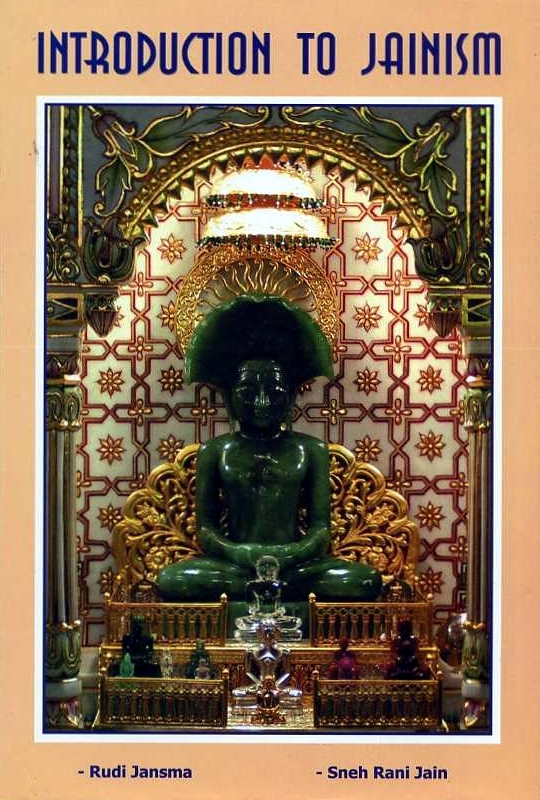An aimless soul, under the impulse of karma
Wandered from birth to birth
In the human kingdom and the animal,
In heaven and in hell
Until it reached the end of its wanderings- Mahāpurāna, parva 174
Thousands of years ago even, the Jains taught about the changes of form in nature, and that life goes from one form into another. They also had a good explanation for these facts. But evolution is much more than change of form. Though Jainism has no explicit doctrine or theory of evolution, its ideas come much closer to the real meaning of evolution than those prevailing in the Western world.
The Origin of Species
The occidental world is proud of the great scientific and philosophical accomplishments of Darwin (to be honest we should add that Darwin elaborated on and published ideas which were already brooding in the mind of his 18th century grandfather - and who knows how many who remained unknown), who put an end to the rigid belief that God had created all life-forms exactly as they were today, and that therefore no changes in form could have taken place. Fossil finds showed however that all kinds of organisms had once lived which had a very different outer appearance that those of today, but that many of them had apparently become extinct. It was also discovered that very many organisms had appeared on the scene long after the presumed six or seven days of God’s creation. But there was as yet no satisfactory explanation for these observations. Some biologists, notably Lamarck, presumed that properties, which were imposed by the environment of an individual organism, could be registered and maintained over the generations. If for example a tropical animal species were to be kept in a cold climate for a number of generations, they would naturally develop thicker fur. If the great great grandchildren would than be brought back to the tropics, their children born there would, despite the warmth, have the same thick fur as their parents because in the meantime this had become an acquired property. It would again take several generations to revert to the original situation. But where that property was recorded, and where the acquired information was kept, was not known. This theory was never proven and has now almost been abandoned. Others, like Charles Darwin and Albert Russell Wallace did not believe in this theory even in those days, Instead the assumed that new characteristics of organisms were either already existent in latency, or were newly formed within the living organisms, and could only surface via procreation. In the case of (either sudden or slow) alterations in environmental conditions, progeny of organisms, which had surfaced such a new property, might suddenly find themselves with a competitive advantage. The new circumstances suddenly made them “stronger” or fitter than their brothers and sisters and more remote family members. Thus they produced progeny that was more successful - seen from an anthropomorphic point of view of the economics of nature - and which carried the new characteristic, which had been fixed in their being with them for the generations to follow. In the 21st century we no longer consider the manner in which characteristics are recorded to be at all mysterious: we know now that all physical characteristics of an organism are represented by a chemical code on a type of molecule known as DNA. Changes to an organism’s characteristics are preceded by an alteration of the DNA in the cell’s nucleus. But what causes these changes? Most scientists ascribe this to pure chance, but are also aware that there is a steering takes place within the organism itself, by whereby some parts of the DNA code can influence others, for example by either stimulating or repressing changes. The mechanisms of the chemistry, which take place within and around the cell nucleus, are extremely complex, and it will take time before science has unravelled the whole puzzle.
From a philosophical point of view the Darwinism of the 19th century and the neo-Darwinism of the 20th are not a theory of evolution, but a theory about change in nature. The word evolution literally means “to roll out,” “to unfold” what is already there in a rolled-up or enfolded state. But Darwinism does not touch on that subject at all. Changes to characteristics are haphazardly by unsteered influences from outside. In fact they are caused by “damage” done to the existing DNA. If the new characteristics provide a competitive advantage, they win out. This is how new races, species and groups of higher order in the biological classification system are said to come into existence. Because in this way ever better characteristics supplant less perfect ones, and the form automatically becomes more perfect. This process has been given the name “evolution” but it really isn’t. It is a side effect of changes of from.
Natural sciences of the 19th and 20th centuries had little eye for the intellectual accomplishments of non-occidental cultures, despite the fact that quite a few “Sacred Books of the East” - India, Persia, China - were translated by scholars like H.H. Wilson, F. Hall, K.T. Telang, and a host of workers under supervision of the German scholar Max Müller. If they paid more attention they would have been aware that many cultures the world over had been pondering the question of evolution from time immemorial. Here we will only pay attention to the views of Jainism about changes of form and evolution in nature.
Outsiders often think that Jainism started with Mahāvīra, who lived some 2575 years ago. The very old scriptures, which were in existence in his day –the twelve Angas –, were destroyed in that same period by hostile factions. In the following centuries texts were written based on monk’s memories and traditions, but these are not exactly the same in the two main sects of Jainism. The most important available scripture, written some centuries after Mahāvīra’s passing, known as the Tattvārthadhigama Sūtra,[52] contains sufficient information for our purpose. In reality, Jainism is far older, as we have already seen, and it is believed that the teachings given to humankind are essentially the same each time. Thus, from a Jain point of view, the teachings are as old as thinking humanity itself.
 Dr. Sneh Rani Jain
Dr. Sneh Rani Jain
 Publisher:
Publisher: